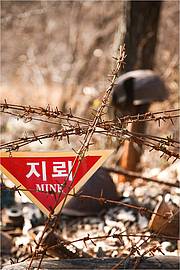From a battleground to a symbol of peace
08 September 2012 | Article
It is the dream of Kwi-Gon Kim, Chairman of the Korea Demilitarized Zone (DMZ) Council, that a Siberian tiger will be spotted at the foot of Jiri Mountain on the southern half of the Korean Peninsula.
For that to happen, Kim, who is also Professor Emeritus at Seoul National University, and the Korea DMZ Council, believe they need to activate the Northeast Asia Ecological Network (NEAEcoNET). NEAEcoNET is an initiative designed to promote a single, continuous ecosystem throughout Northeast Asia, including Mongolia, Russia, China, North and South Korea.
According to Kim, for the NEAEcoNET to be successful, the Korean Peninsula would need better cooperation on environmental issues. This would allow for the conservation and restoration of species and their habitats in both North and South Korea. A critical element of that cooperation will be the DMZ, where the natural environment of a previously war-torn area has self-recovered to transform itself into a well-preserved ecosystem that harbours diverse natural habitats.
“The DMZ is an area where the fiercest battle was fought during the Korean War,” said Dr. Gi-Woong Son, President of the Korean Association of DMZ Studies, in a statement. “Due to its geographical nature of being located at the centre of the [Korean] Peninsula, the DMZ, through which two shared rivers flow, serves as a [channel] and a pivotal point of contact for inter-Korean exchange and cooperation.”
“The DMZ represents peace, war, ecology, history and culture,” added Jae-Seung Lee, Professor of International Studies at Korea University and Visiting Scholar at the Freeman Spogli Institute of International Studies at Stanford University. “Not many places in the world have that.”
“It is our goal to transform the DMZ from a symbol of conflict to one of peace,” said Dr. Son.



